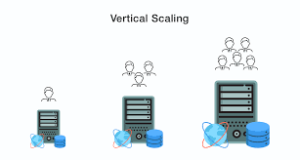The Future of AI: Harnessing Big Data – Jain Software’s Approach to Data Analytics
In Business, Official BlogAs the world continues to move ahead in the new millennium, AI and big data have both formed an intricate connection that has a great impact on industries in various parts of the globe. Pioneering data analytical solutions in the technological world is Jain Software which is developing radical ideas and solutions to the complex world of data analytics. In this blog, you can read about how Jain Software combines big data and artificial intelligence technologies to provide valuable information and future ties for immense industries.
However, Big Data and AI were not clearly defined through the reading but they are related terms because big data is used to create databases that help in the training of AI machines.
To help the reader gain an understanding of Jain Software’s outlined strategy, it is imperative to define big data and AI in this section. Big data is described as the large amount of structured and unstructured data, either in terms of type, size, or format, that is created by businesses, devices, or users at a very large scale. The possibilities of these data once analyzed are endless, that is, there are patterns, trends and information hiding that could not even have been imagined.
The former refers to the idea of machines especially computers mimicking or emulating various human intellect capabilities while the latter is the use of computer systems to replicate some of the advanced human abilities. These processes include learning (the understanding and mastery of information and knowledge and the ways in which information can be utilized), reasoning (the employment of rules and decision-making to arrive at close or exact results), and checking. The use of AI algorithms when dealing with big data can exploit them in quite the same manner beyond human comprehension and thus make predictions and decisions at an impressive accuracy.
The development of visionary software solutions for big data and artificial intelligence for Jain Software.
The founder of Jain Software wants the company to be involved with AI and big data broadly to be integrated with every sector of the business. It means that their mission concentrates on providing organizations with the tools and the knowledge that would allow them to meet the challenges of data-driven decision making. The company intends on using sophisticated techniques in artificial intelligence and complementing them with sound data analysis paradigms to meet some of the industry’s key issues.
In this paper, key elements of Jain Software’s strategy-making approach will be outlined as follows.
Data Collection and Integration: Jain Software effectively focuses on the need for undertaking comprehensive data collection and analyses. They know the fact that relevancy and accuracy of the information retrieved through big data analysis depends heavily on the quality and the availability of the data being fed to the system. As a result, they use complicated ways of data acquisition from various sources encompassing IoT gadgets, social medias, customers or clients, as well as business applications. This information is then put into a common repository of information, thereby, having a comprehensive view of the information management.
Advanced Analytics and Machine Learning: In the context of Jain Software’s strategic focus, the use of big data analytics coupled with Machine Learning algorithms should be mentioned as a major UAV. These are special algorithms whose main purpose is calculation and analysis of large volumes of information while searching for concealed connections and dependencies. Deep learning is used by Jain Software to capture new information or trends from the available data set and NLP is applied to transform the raw unstructured data available in the business houses into proper structural format and finally, the predictive analytics help the business houses in forecasting the future trends. It helps them to make their models more accurate and suitable to the specific field by continually training and developing them.
Scalable Infrastructure: As a strategy of handling the large volumes of information that may be generated in the course of business, Jain Software has a modular structure that can easily expand as the clients expand. All these components rely on cloud technology to store and process data in a manner that is convenient, efficient, and scalable. To that end, Jain Software employs the use of distributed computing as well as parallel processing in order to guarantee the capabilities of their data analytics services to handle large and complex data sets.
Data Security and Privacy: As security and privacy of information are major concerns in the current era, Jain Software is very cautious in dealing with these two factors. They know that when you have big data, you must have big impacts and that’s why they committed themselves to ensure that they made the right impacts. So, they have come up with strict measures to ensure that no third party gallows into their system and steal or leak important results. Having various data analytics solutions, they are committed to the standards of the sphere and its legal frameworks that guarantee the security of their work.
Organizations that have implemented Jain Software’s Data Analytics Solutions
Due to the fact that Jain Software has a diverse offering of data analytics services, it can effectively serve different fields. Here are some notable applications: Here are some notable applications:
Healthcare: In the healthcare business, the range of AI-powered data analytical programs by Jain Software is transforming the ways patients are treated and diseases are studied. Deploying these algorithms with the help of big data and analyzing the large number of patients, their AI systems help to determine the possibilities of a disease spread, find possible ways of treatments for those who needs it and even customize the process of treating patients. It not only enhances the quality of care presented to patients but also increases efficiency in the use of the limited resources seen within today’s health care institutions.
Finance: The management of finances is a significant area where the solutions and services of Jain Software can help with the advanced knowledge of big data and AI. They help financial organizations to discover scams, identify risks related to credits, and offer customers tailored financial recommendations. Hence by employing predictive analytics, they assist the clients in making investment decisions and avoiding possible risks.
Retail: As a result it is very vital for the retail business to study customer behavior in order to have an increased sale and satisfy the customer. The strategies offered by Jain Software that has the impact on retailers include customer preference analysis for purchase behaviour, inventory requirements, and tailormade marketing. They allow the retail companies to forecast demand patterns, thereby facilitating more informed business decisions that can lead to increased revenues.
Manufacturing: The strategy of data analysis employed by Jain Software has had a profound impact on the manufacturing industry, earning it acclaim and strive for mechanical excellence. With data from sensors and production lines within organizations, their solutions are able to forecast breakdowns, streamline repairs and scheduling, and inventory logistics. This helps to decrease time spent on rerouting, cost, and increases in productivity at the end of the day.
Smart Cities: Jain Software is also imparting its contribution towards the initiation and evolution of smart cities as well. Their solutions combining data collected from traffic sensors, public transportation systems, and even environmental measurement systems helps to plan and allocate resources more effectively in cities. In this perspective, they aid in easing traffic congestion, improve the standard of living by making people’s life in cities healthier due to better air quality.
This is because the future of AI and big data is bright not just for the entire technological industry but also at Jain Software.
In the future, Jain Software is determined to advance to the use of Artificial intelligence and big data facilities. In this regard, more innovations are worked on by their dedicated R & D team in order to offer a more advanced data analytics solutions. Here are some key areas of future development: Here are some key areas of future development:
Explainable AI: The rationale behind AI systems’ decisions continues to be significant given the systems’ sophistication. Jain Software is constantly woking on the affair called explainable AI that should make the work of AI algorithms more transparent. This allows users to trust and get meaningful information from the insights provided by autonomous AI systems.
Real-time Analytics: Numerous organizations and companies have realized the importance of Real-Time Data Analytics to make quick decisions. Jain Software is working on solutions that can presumably help analyze and process the data in real-time, so that the business can react as quickly as possible to the changing conditions. This reason is particularly paramount in organizations within the finance and healthcare industries, where the impact resulting from swift decision making is normally felt.
Enhanced Predictive Capabilities: Currently, Jain Software is enlarging its predictive analytics models, aiming to improve the models’ efficiency and efficacy. Thus, their goal is to enhance the data sources which involve the provision of more accurate predictions and advices based on algorithms.
Ethical AI: Ethical issues are one of the critical concerns within Jain Software as it implements this type of technological innovation. They maintain deep commitments to provide AI solutions that do not act prejudiced, and they respect the privacy of the users. They have laid down guidelines and a policy on ethical use of technologies to avoid exploitation of the products they develop.
Conclusion
Jain Software has adopted a strategy to embracing big data and AI technology to enhance efficiency in its strategies. ‘Through the use of sophisticated of statistic and informatics, modern infrastructure and focus on data protection they provide outcomes to support innovativeness and effectiveness in different fields. Given the continuous developments of sophistication and advancement in technology, Jain Software is well set to sustain its position as one of the premier data analytics companies in the market for more years to come in the comprehend of the future AI and big data analytics.










